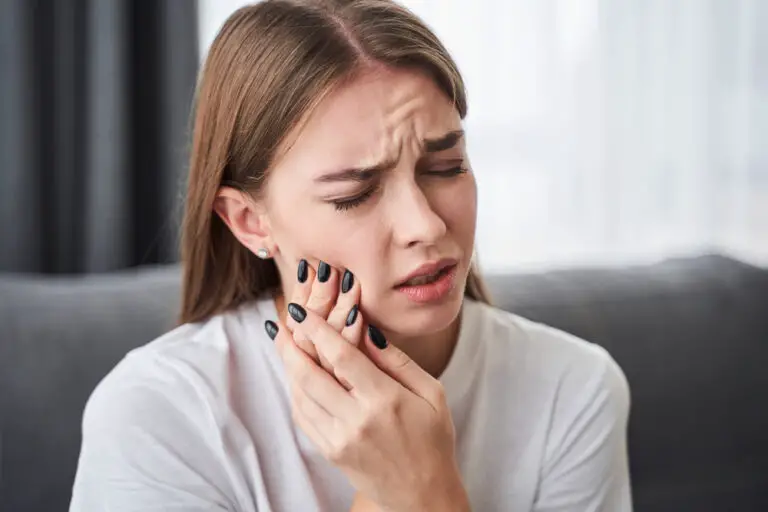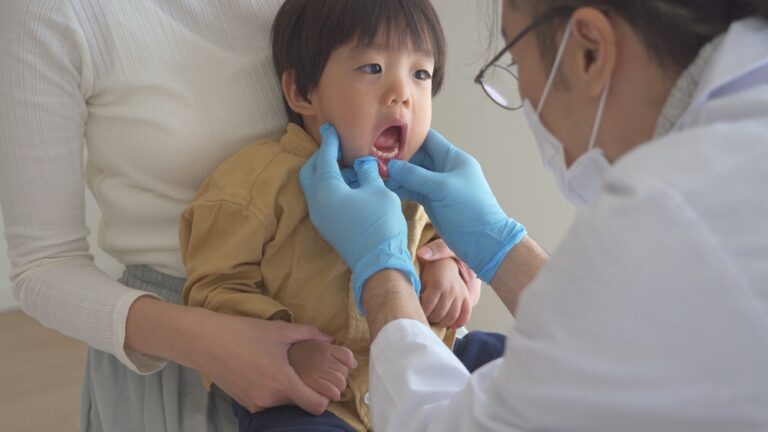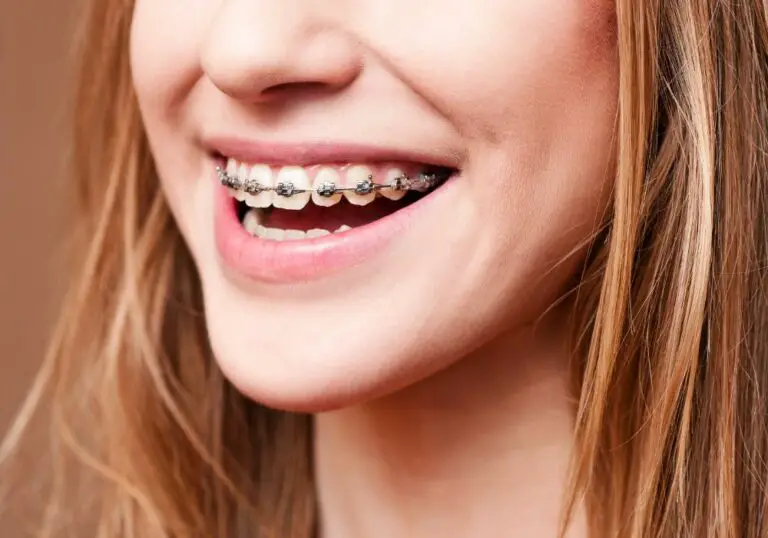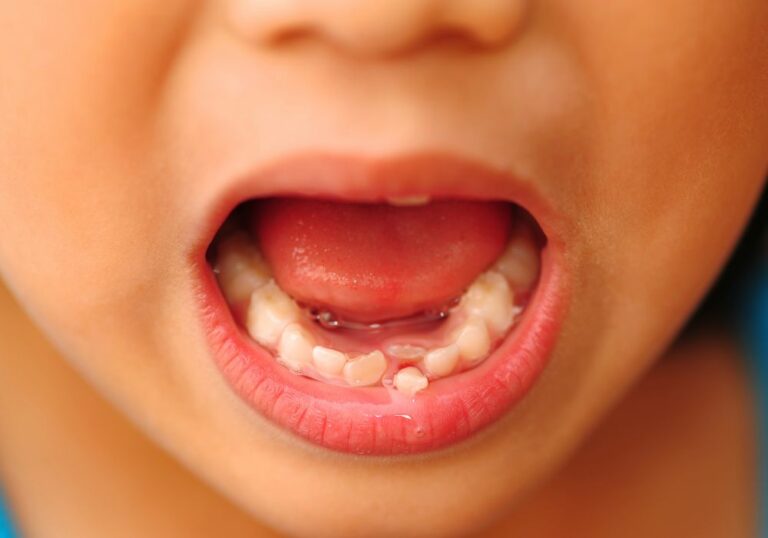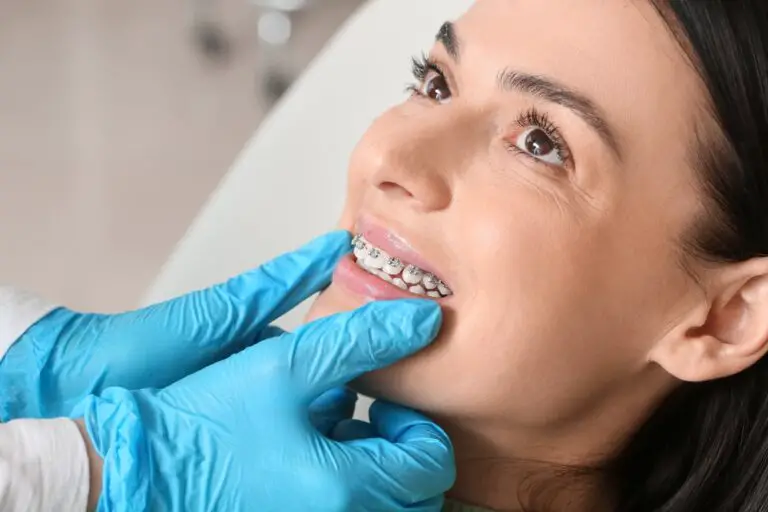After a tooth extraction, it’s important to take care of the extraction site to ensure proper healing. One of the most important things you can do is to eat the right foods during the recovery process. While you may be tempted to eat your favorite foods right away, it’s best to stick with soft foods that won’t irritate the extraction site.
For the first 24 hours after your tooth extraction, it’s best to stick with liquids or soft foods that require minimal chewing. Broths, soups, and smoothies are all great options that can help keep you nourished while also being easy on your mouth. Avoid using straws, as the suction can dislodge the blood clot that forms over the extraction site.
After the first 24 hours, you can start to introduce more solid foods into your diet. However, it’s important to avoid hard, crunchy, or chewy foods that can irritate the extraction site. Stick with soft foods like mashed potatoes, scrambled eggs, and cooked vegetables. As your mouth heals, you can gradually start to reintroduce more solid foods into your diet.
Understanding Tooth Extraction
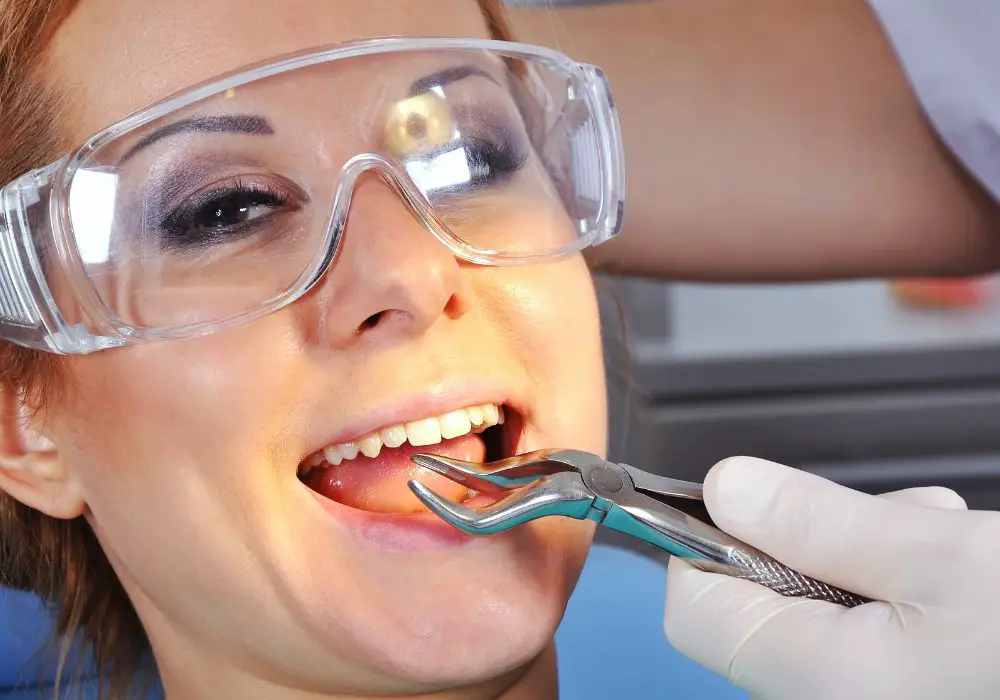
If you’re scheduled for a tooth extraction, you may feel nervous or apprehensive about the procedure. However, understanding what to expect can help ease your worries and ensure a smooth recovery. In this section, we’ll cover the reasons for tooth extraction and the extraction process.
Reasons for Tooth Extraction
There are several reasons why you may need a tooth extraction. Some of the most common reasons include:
- Severe decay or damage that cannot be repaired with a filling or crown
- Crowding or misalignment of teeth
- Infection or abscess that cannot be treated with antibiotics
- Impacted wisdom teeth that are causing pain or other problems
Your dentist or oral surgeon will evaluate your situation and determine if a tooth extraction is necessary.
The Extraction Process
Before the extraction, your dentist or oral surgeon will numb the area around the tooth with a local anesthetic. If you’re anxious or nervous, they may also offer sedation to help you relax.
Once the area is numb, the dentist or oral surgeon will use specialized tools to loosen the tooth from the socket. They may need to make incisions in the gum tissue or remove bone around the tooth to make it easier to remove.
After the tooth is removed, your dentist or oral surgeon will place gauze over the extraction site to help control bleeding. They may also provide you with instructions for caring for the area and what foods to eat or avoid in the first few days after the extraction.
Overall, tooth extraction is a common procedure that can help alleviate pain and prevent further dental problems. By understanding the reasons for extraction and what to expect during the procedure, you can feel more confident and prepared for your appointment.
Immediate Post-Extraction Diet
After a tooth extraction, it’s important to take care of your mouth and follow a proper diet to ensure a speedy recovery. In the immediate post-extraction period, it’s best to stick to a liquid or soft food diet to avoid any discomfort or irritation to the extraction site.
Liquid Diet
For the first 24 hours after your tooth extraction, it’s recommended that you only consume liquids. This will help prevent any damage to the extraction site and reduce the risk of infection. Here are some liquid options to consider:
- Water
- Broth
- Milk
- Smoothies (without seeds or chunks)
- Fruit juices (without pulp)
- Sports drinks (without carbonation)
Make sure to avoid any hot liquids, as they can increase bleeding and swelling. Instead, opt for cool or room temperature liquids.
Soft Foods
After the first 24 hours, you can begin to introduce soft foods into your diet. Soft foods are easy to chew and won’t cause any discomfort or irritation to the extraction site. Here are some soft food options to consider:
- Scrambled eggs
- Mashed potatoes
- Yogurt
- Applesauce
- Oatmeal
- Soup (blended thoroughly to avoid any small bits)
Make sure to avoid any hard, crunchy, or sticky foods, as they can damage the extraction site and delay the healing process. Additionally, avoid any spicy or acidic foods, as they can cause discomfort and irritation.
By following a proper post-extraction diet, you can ensure a speedy recovery and avoid any complications. Remember to take it easy and listen to your body’s needs during this time.
24 Hours After Extraction Diet

After tooth extraction, it is important to follow a proper diet to promote healing and avoid any complications. In the first 24 hours, it is recommended to consume only soft and liquid foods to prevent any damage to the extraction site. Here are some food options that you can consider:
Protein-Rich Foods
Protein is an essential nutrient that helps in the repair and growth of tissues. In the first 24 hours after tooth extraction, you can consume protein-rich foods that are soft and easy to chew. Some options include:
- Scrambled eggs
- Smoothies with protein powder
- Yogurt
- Cottage cheese
- Mashed beans
Fruit and Vegetables
Fruits and vegetables are rich in vitamins and minerals that help in the healing process. However, in the first 24 hours after tooth extraction, you should avoid consuming raw fruits and vegetables as they can be hard to chew. Instead, you can consume:
- Cooked and mashed sweet potatoes
- Applesauce
- Cooked and mashed carrots
- Fruit smoothies without using a straw
Dairy Products
Dairy products are a good source of calcium and protein, which are essential for bone health. However, in the first 24 hours after tooth extraction, you should avoid consuming hard and crunchy dairy products. Some soft dairy options that you can consider include:
- Milk
- Yogurt
- Pudding
- Ice cream (without nuts or hard pieces)
Remember to avoid hot and spicy foods, carbonated drinks, and anything that requires excessive chewing. It is also important to stay hydrated by drinking plenty of water. If you experience any discomfort or pain, consult your dentist immediately.
By following a proper diet, you can ensure a speedy recovery after tooth extraction.
Foods to Avoid
After a tooth extraction, it is essential to avoid certain foods to prevent any complications. Here are some foods you should avoid for the first 24 hours after tooth extraction:
1. Hot and Spicy Foods
Hot and spicy foods can irritate the extraction site and cause pain and discomfort. Avoid foods like chili, curry, and hot sauce.
2. Hard and Crunchy Foods
Hard and crunchy foods can also irritate the extraction site and cause bleeding. Avoid foods like nuts, chips, and popcorn.
3. Acidic Foods
Acidic foods can cause a burning sensation in the mouth and irritate the extraction site. Avoid foods like citrus fruits, tomatoes, and vinegar-based dressings.
4. Carbonated Beverages
Carbonated beverages can dislodge the blood clot and delay the healing process. Avoid drinks like soda, sparkling water, and beer.
5. Alcohol and Tobacco
Alcohol and tobacco can slow down the healing process and increase the risk of infection. Avoid drinking alcohol and smoking for at least 24 hours after tooth extraction.
By avoiding these foods and drinks for the first 24 hours after tooth extraction, you can ensure a smooth and quick recovery. Remember to follow your dentist’s instructions and take any prescribed medications as directed.
Hydration and Oral Health
Hydration is important for your overall health and oral health, especially after a tooth extraction. Drinking plenty of water can help keep your mouth moist and promote healing. It can also help flush out any food particles or debris that may be stuck in your mouth.
In addition to water, you can also drink other liquids such as broth, tea, and juice. However, it’s important to avoid carbonated drinks and alcohol as they can irritate the extraction site and delay healing.
If you’re having trouble drinking enough fluids, try sipping on small amounts throughout the day rather than trying to drink a large amount at once. You can also try using a straw to help you drink without causing any suction that can dislodge the blood clot.
In addition to drinking fluids, you can also eat foods that are high in water content such as fruits and vegetables. This can help keep your mouth moist and provide your body with important nutrients for healing.
Overall, staying hydrated is crucial for your oral health and can help promote healing after a tooth extraction. Make sure to drink plenty of water and other fluids, and avoid carbonated drinks and alcohol.
Nutrition for Healing
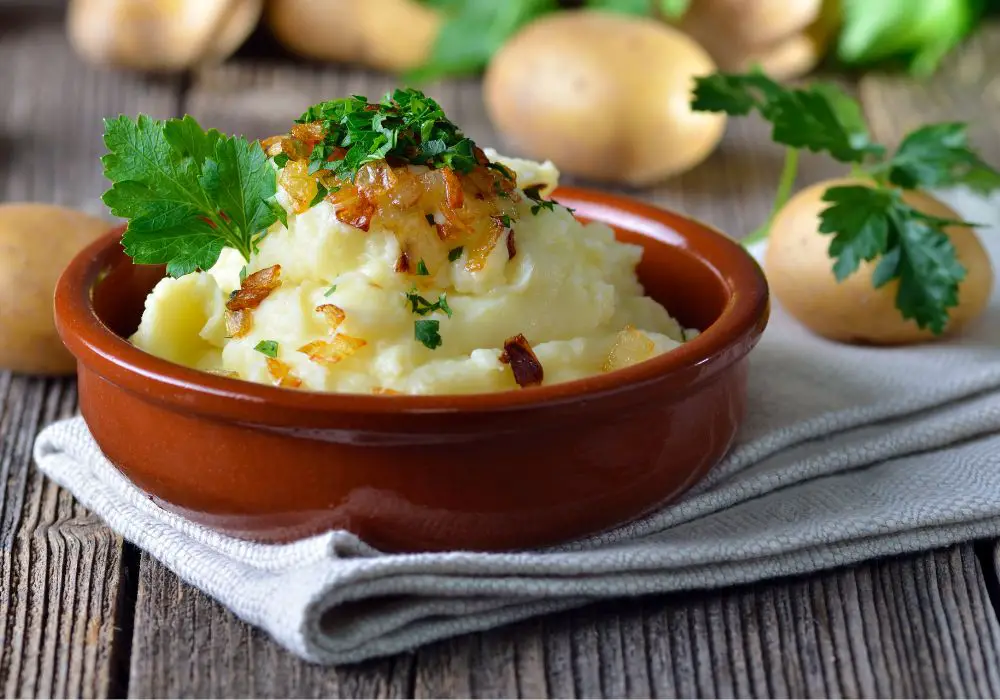
After a tooth extraction, it is essential to consume foods that promote healing and avoid those that can irritate the wound. Proper nutrition can help speed up the healing process and reduce the risk of complications. Here are some tips on what to eat after tooth extraction:
Soft and Liquid Foods
For the first 24 to 48 hours after tooth extraction, stick to a diet of soft and liquid foods. These foods are easier to chew and swallow and less likely to irritate the wound. Examples of soft and liquid foods include:
- Smoothies
- Applesauce
- Mashed potatoes
- Broth
- Soups
- Yogurt
- Pudding
- Ice cream
Avoid hot foods and drinks as they can cause more pain to your nerve endings and interfere with the healing process.
Nutrient-Rich Foods
Eating nutrient-rich foods can help your body heal faster after tooth extraction. Here are some nutrients that are essential for healing:
- Protein: Helps the body produce new tissue and repair the wound caused by the extraction. Good sources of protein include eggs, chicken, fish, and beans.
- Vitamin A: Vital for cell growth and healing. Good sources of vitamin A include sweet potatoes, carrots, and spinach.
- Vitamin C: Also essential for cell growth and healing. Good sources of vitamin C include citrus fruits, strawberries, and broccoli.
- Zinc: Helps the body heal wounds. Good sources of zinc include beef, pork, and nuts.
- Iron: Necessary for proper circulation. Good sources of iron include red meat, beans, and spinach.
Hydration
Drinking plenty of fluids is essential after tooth extraction. It helps keep the mouth moist and prevents dehydration, which can slow down the healing process. Water is the best choice, but you can also drink fruit juice, vegetable juice, and herbal tea.
Foods to Avoid
Some foods can irritate the wound and slow down the healing process. Avoid the following foods for the first few days after tooth extraction:
- Hard and crunchy foods, such as nuts, chips, and popcorn
- Spicy foods
- Acidic foods, such as citrus fruits and tomatoes
- Alcohol and tobacco
By following these tips, you can promote healing after tooth extraction and reduce the risk of complications. Remember to consult your dentist or oral surgeon for specific dietary recommendations based on your individual needs.
Frequently Asked Questions
When can I start eating solid food after a tooth extraction?
It is recommended that you wait at least 24 hours before eating solid foods after a tooth extraction. During the first day, stick to soft and liquid foods to avoid damaging the extraction site.
What are some soft foods I can eat after a tooth extraction?
There are many soft foods that you can eat after a tooth extraction, including:
- Yogurt
- Smoothies
- Applesauce
- Mashed potatoes
- Soup
- Pudding
- Jello
What foods should I avoid after a tooth extraction?
It is important to avoid hard, crunchy, and sticky foods after a tooth extraction. These foods can damage the extraction site or dislodge the blood clot, which can lead to complications. Some foods to avoid include:
- Popcorn
- Nuts
- Chips
- Candy
- Gum
- Tough meats
Can I eat pasta or chicken 24 hours after a tooth extraction?
It is best to wait at least 24 hours before eating pasta or chicken after a tooth extraction. However, make sure that the pasta is soft and easy to chew, and the chicken is cooked until it is tender and easy to cut.
How long should I wait to eat after a tooth extraction?
It is recommended that you wait at least one hour after a tooth extraction before attempting to eat anything. This will give the anesthesia time to wear off and reduce the risk of accidentally biting your tongue or cheek.
What are some foods I can eat 5 or 7 days after a tooth extraction?
After 5 or 7 days, you can start to incorporate more solid foods into your diet. Some foods to consider include:
- Cooked vegetables
- Soft fruits
- Pasta
- Rice
- Eggs
- Fish
Remember to chew on the opposite side of your mouth to avoid putting pressure on the extraction site.

